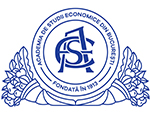Articles on Issue Theme

Radu-Cristian MUŞETESCU
Academia de Studii Economice din Bucureşti
The fundamental contribution of the institutional economics and transaction costs economics to the science of economics is considered to be the comparative analysis of the institutional arrangements. Starting from the fact that human individuals are acting in social relations through social institutions (broadly defined as coordinated action) as they are not isolated, these branches of economics attempt to explore the comparative advantages and disadvantages of these institutions in what regards the organization of economic activity. The main distinction in the economic analysis is between the markets and the so-called hierarchies (an antithesis popularized by Oliver Williamson himself). That is, contracts between independent entities (in the case of markets) and organization based on administrative decision (which is considered to be defining for hierarchies).
The critical working hypothesis of this type of institutional analysis is that the natures of these two main institutional arrangements are totally different in nature. Only from such a perspective, it makes sense to debate on the “limits” of organizations, of what is “inside” or “outside” these institutions. The paradox of this core distinction is that it is less demonstrated but more postulated. Lacking a framework of property rights, the theory of the internal organization such as the one developed by Oliver Williamson is seriously missing the point. It is based on a caricatured description of markets and touches almost wishful thinking in presenting the advantages of the internal organization. Fundamentally, it is taking over without questioning a legal approach to economic institutions. The theory of the firm developed by transaction costs economics and other related schools of thought needs a serious reassessment.
The critical working hypothesis of this type of institutional analysis is that the natures of these two main institutional arrangements are totally different in nature. Only from such a perspective, it makes sense to debate on the “limits” of organizations, of what is “inside” or “outside” these institutions. The paradox of this core distinction is that it is less demonstrated but more postulated. Lacking a framework of property rights, the theory of the internal organization such as the one developed by Oliver Williamson is seriously missing the point. It is based on a caricatured description of markets and touches almost wishful thinking in presenting the advantages of the internal organization. Fundamentally, it is taking over without questioning a legal approach to economic institutions. The theory of the firm developed by transaction costs economics and other related schools of thought needs a serious reassessment.
ŒCONOMICA no. 4/2009
Keywords: market, state, political, social and cultural values, theory of the firm, transaction costs economics, opportunism
Piaţă versus ierarhie: perspectiva lui Oliver Williamson asupra organizării interne
Select Issue:
Archive
Octavian-Dragomir JORA
Academia de Studii Economice din Bucureşti

Mara Andreea TUDOR
University of Chicago

Cătălin MURARAŞU
Academia de Studii Economice din Bucureşti

Ramona Iulia DIEACONESCU
Academia de Studii Economice din Bucureşti

Maria GHEORGHE (NIŢU)
Academia de Studii Economice din Bucureşti

Sorin-Nicolae CURCĂ
Academia Română

Revista ŒCONOMICA

Authors

